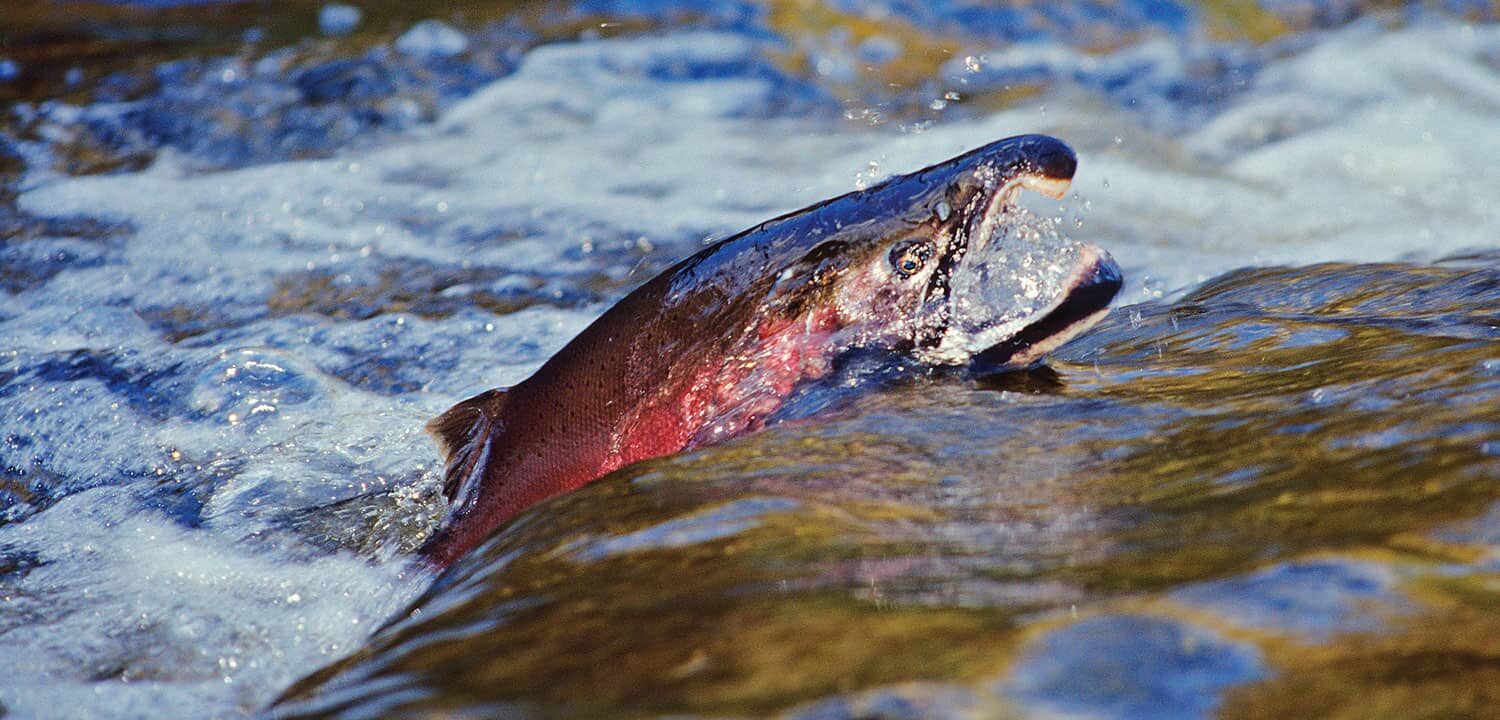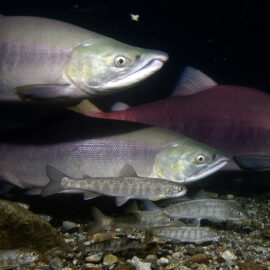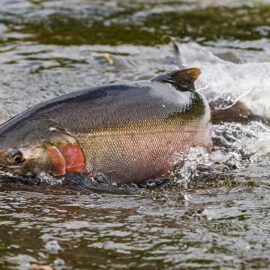Coho populations are small and widely distributed. They use coastal streams and off-channel wintering habitats, which are highly vulnerable to the effects of agriculture and logging. Entering in fall and early winter, coho usually are the last salmon to migrate upriver. In Russia coho populations have not been well documented or targeted.
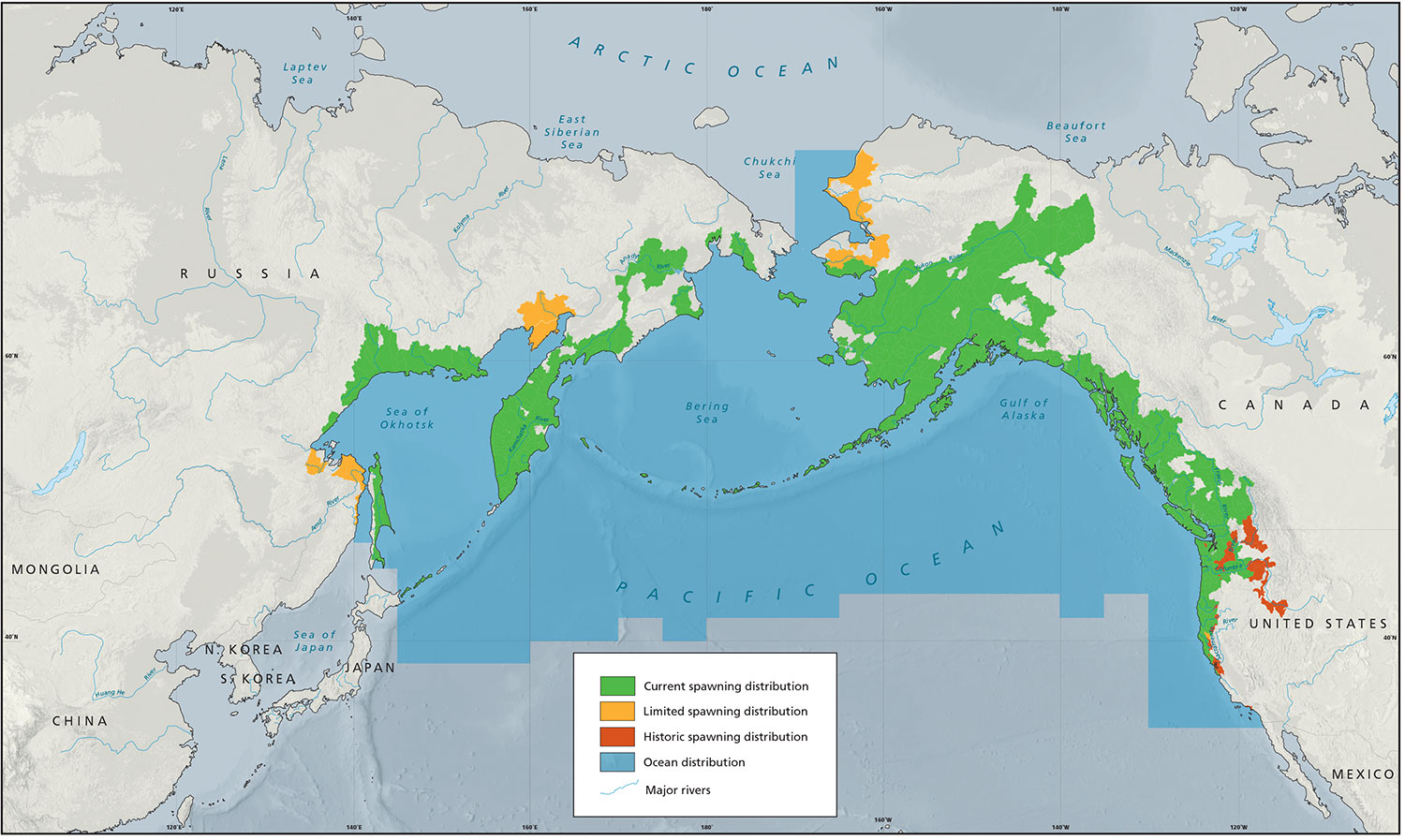
In the western Pacific, coho distribution clusters around the shores of the Sea of Okhotsk, covering Sakhalin and Kamchatka and much of the Magadan coastline. Distribution is continuous from the Koryakia coastline to the Anadyr River basin. In Alaska coho venture deep inland via the Yukon and Kuskokwim Rivers. As the latitude decreases, coho make shorter migrations. Historically, coho spawned hundreds of kilometers inland, in the Snake and Columbia Rivers. Many populations there have been extirpated as they have at the southern extent of their former range. Oregon Coast coho are uniquely poised for recovery. Coastal rivers are largely comprised of free-flowing rivers that are now mostly devoid of hatchery coho production.
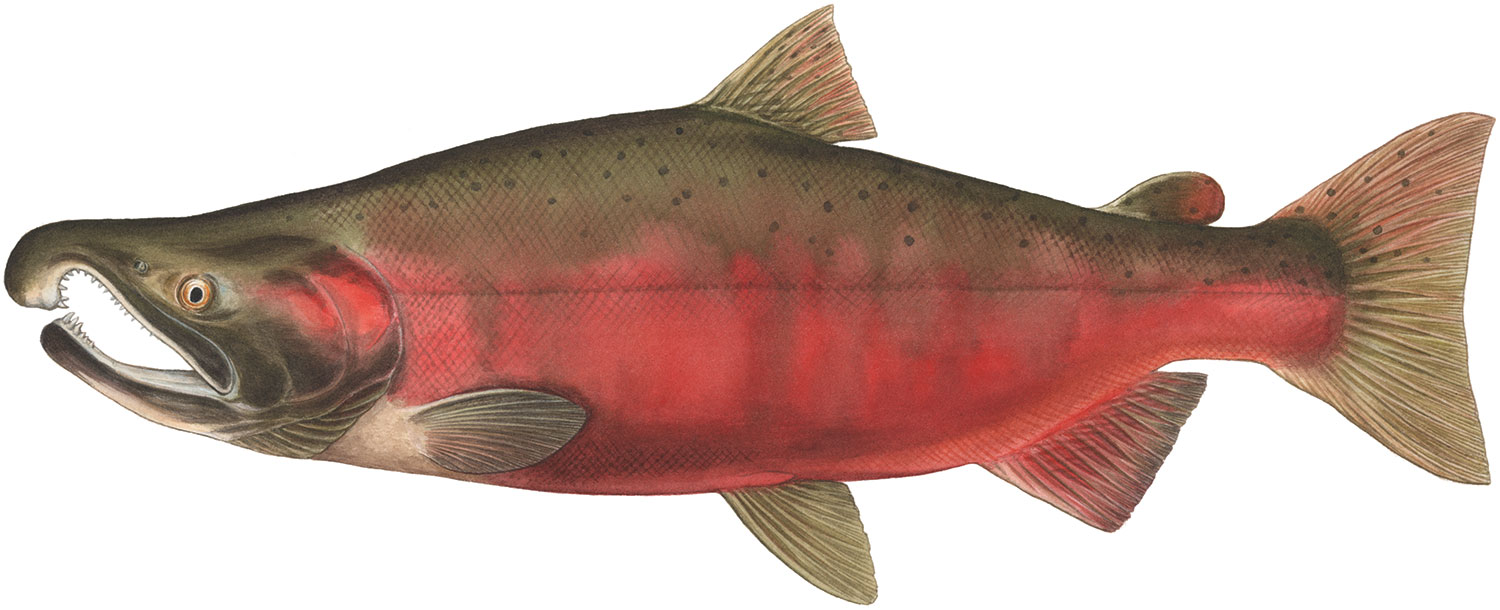
Scientific name
Oncorhynchus kisutch
Abundance
Although coho salmon are broadly distributed across the North Pacific, they form networks of small populations. Coho represent approximately 10 percent of the North Pacific commercial catch. Marine distribution is generally restricted to shelf waters.
Size
Coho typically weigh 5.5 to 11 pounds (2.5 – 5 kg) when they return to their natal rivers. Mature adults measure up to 36 inches (95 cm) in length.
Life history
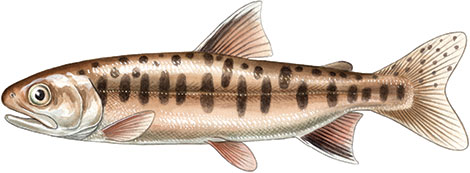
Coho, which live 2 – 4 years, have simpler life histories than Chinook. Coho typically spawn in coastal streams. In contrast to chum and pink salmon, coho spend at least one winter (in some populations two) in freshwater. They are often associated with slow current, pool, and side channel habitat in rivers. Coho make short feeding migrations compared to most other anadromous Pacific salmon.
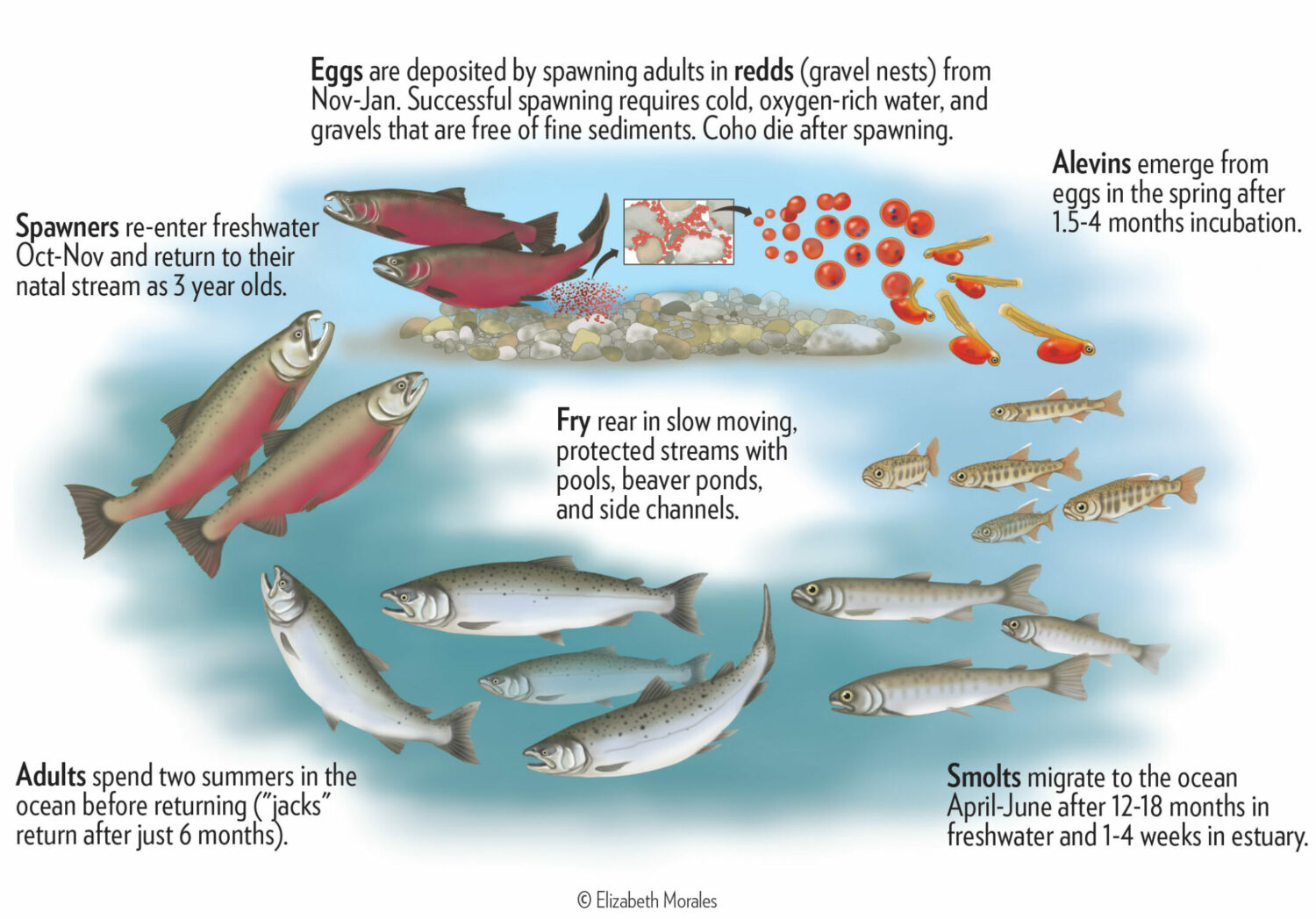
Early maturing male coho (jacks) leave the riverine system after one winter but return in the fall instead of overwintering in the ocean. Numbers of returning jacks provide a good indicator of feeding conditions and are used to forecast the following year’s spawning run.
Cultural role
Early in the 20th century, niche markets developed around coho. High-quality, line-caught fish were sold fresh or frozen for the European smoked fish market. More recently, coho have become a popular sportfishing target.
